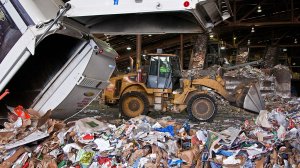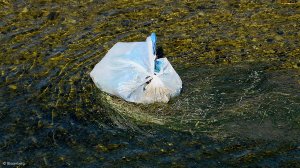Industry association Plastics South Africa (Plastics SA) will develop implementation and operation plans for four industry initiatives aimed at stimulating growth in the plastics industry in March.
Plastics SA executive director Anton Hanekom tells Engineering News that the first initiative, ‘Zero Plastics to Landfill by 2030’, which was agreed to at a Plastics SA strategic session in February last year, focuses on recycling and sustainability projects in the plastics industry.
This first initiative aims to develop and implement strategies, which will enable the plastics industry to increase the current rates of recycling, and the development of alternative technologies that create energy and fuel from plastics waste. Hanekom notes that this technology will enable the plastics industry to deal with waste that has not been collected or used for recycling.
The plastics industry converts 1.4-million tons of virgin plastic materials into plastic products every year, with about 280 000 t recycled into new products.
He highlights that Plastics SA is also looking at stimulating growth by increasing exports and replacing imported plastic products with locally manufactured products. The impetus on increasing exports is because South Africa has a relatively small plastics market far from larger markets, with no strong drive from consumers to buy locally manufactured plastic. Therefore, Plastics SA plans to increase exports into Africa as part of its regional integration strategy, which will enable the plastics industry to take advantage of markets in Africa.
Hanekom points out that, over the past 15 years, plastic imports from Asia, particularly China, India and South Korea, have increased significantly, resulting in local plastics-manu- facturing sectors, such as medical syringe manufacturers, closing down. “We have to look at ways of creating new initiatives to replace the imports that are coming in.”
Hanekom suggests that imported plastic products from Asia are significantly cheaper, but are not of the same quality and standards as the plastic products produced locally. “However, because consumers are under financial pressure, they often select the cheapest option. This has an impact on the local industry, as the more import products we buy in South Africa, the more jobs we export.”
He notes that Chinese plastics manufacturers can produce more products, as they can continuously manufacture a plastic product using one machine without having to change moulds. However, in South Africa, moulds need to be changed daily to produce different plastic products for the volumes required by the local market, adding to a number of factors making South Africa uncompetitive.
Another challenge that the local plastics industry faces is the costs involved in complying with local legislation and regulation. “Com- pliance costs could add from about 5% to 15% to the baseline costs of the product. Often, imported products do not need to comply with the same regulations, making the playing fields uneven,” Hanekom avers.
Owing to the increase in plastic imports, Plastics SA is also focusing on improving innovation and skills development in the industry. “We need to be more creative regarding the type of products we manufacture in South Africa,” he states, adding that most plastic products are commodities, such as bottles and bags, and that there is a lot of local competition in these areas.
“We need to think about how we can create niche products that can be exported. It is all about adding value to our products, which is linked to skills development. We need more skilled people in South Africa who will be able to operate high-level technology and equipment, which, in turn, will enable the local plastics industry to develop niche products.”
Hanekom notes that innovation, research and development (R&D), and investment in new technologies will further improve the growth of the plastics industry.
He points out that plastics manufacturers invested significantly in new technologies in the early 2000s. “However, because of the pressures plastics companies currently face, there is less focus on innovation and R&D, and more focus on survival.”
Plastics SA will also consider the estab- lishment of private-public partnerships, particularly with the South African govern- ment. “Plastics impact on all industries and we need to create clusters around these industries and find ways of getting involved in national projects, such as the 18 Strategic Infrastructure Projects. Plastic is used in construction, for example, and we need to find ways to make plastic a part of these programmes and part of the National Infrastructure Plan,” he explains.
Hanekom concludes that securing government tenders will further stimulate growth in the plastics industry.
Edited by: Megan van Wyngaardt
Creamer Media Contributing Editor Online
EMAIL THIS ARTICLE SAVE THIS ARTICLE
To subscribe email subscriptions@creamermedia.co.za or click here
To advertise email advertising@creamermedia.co.za or click here














